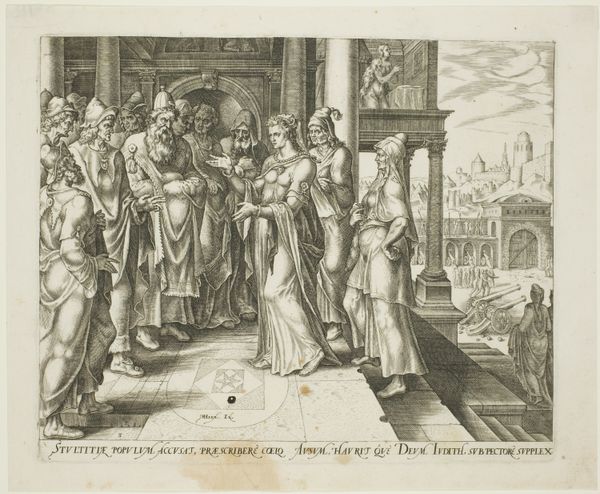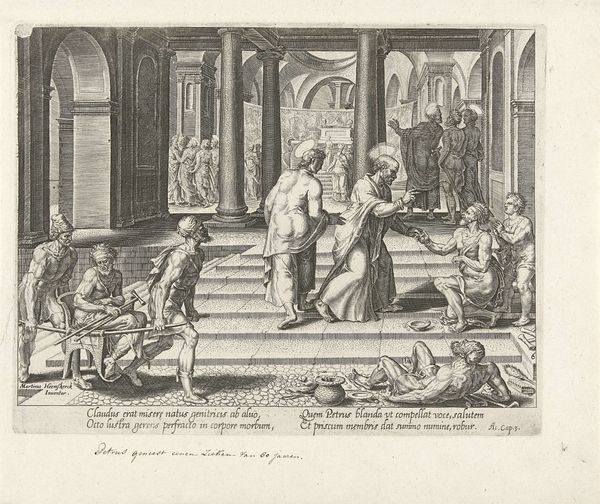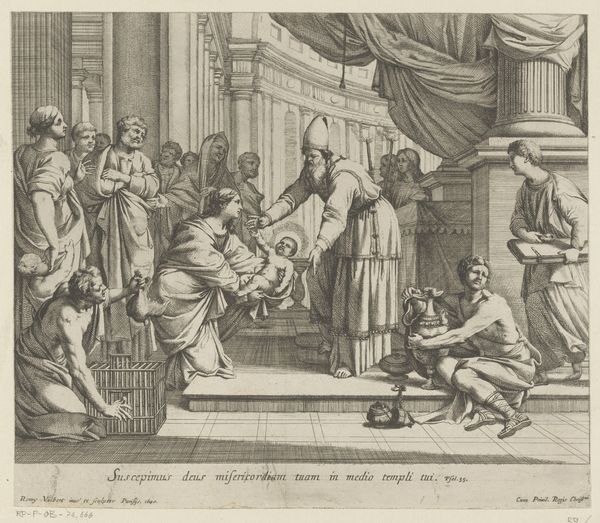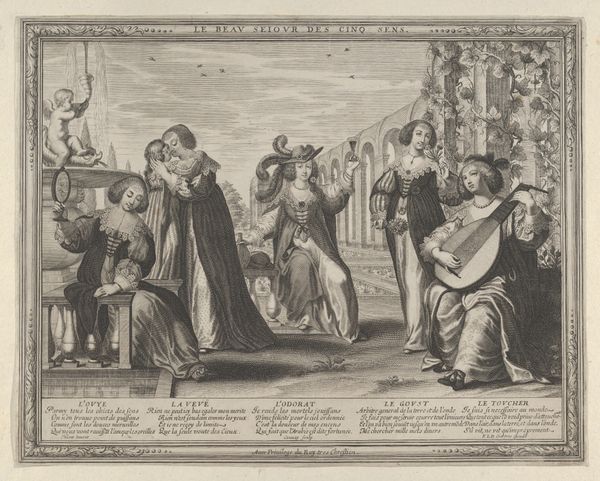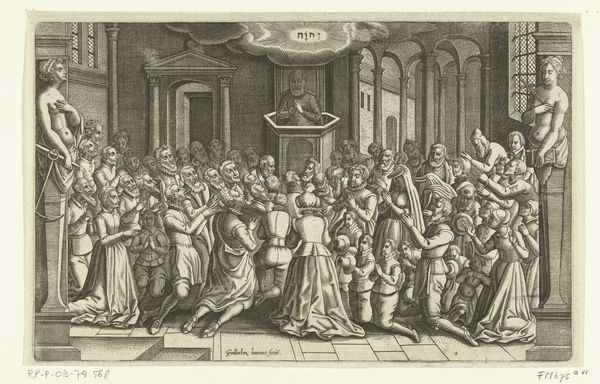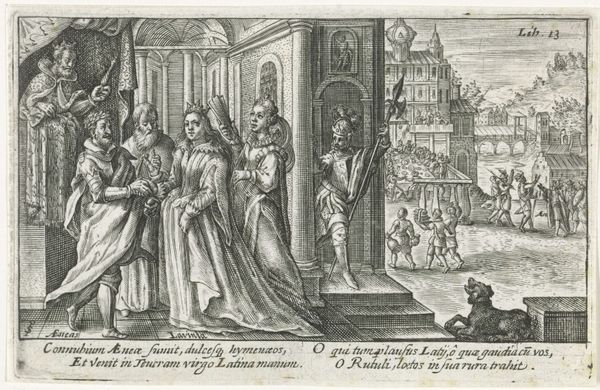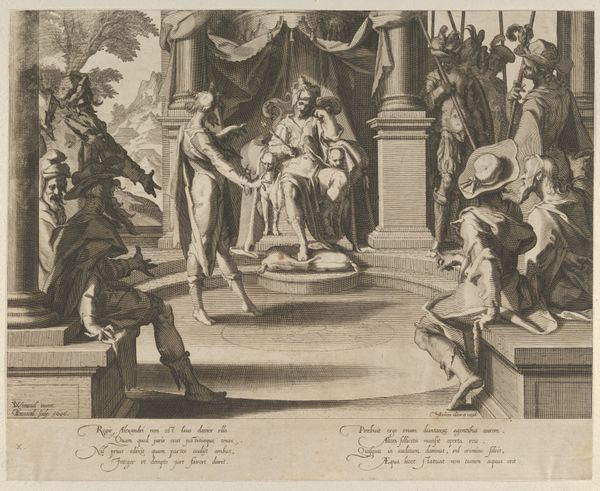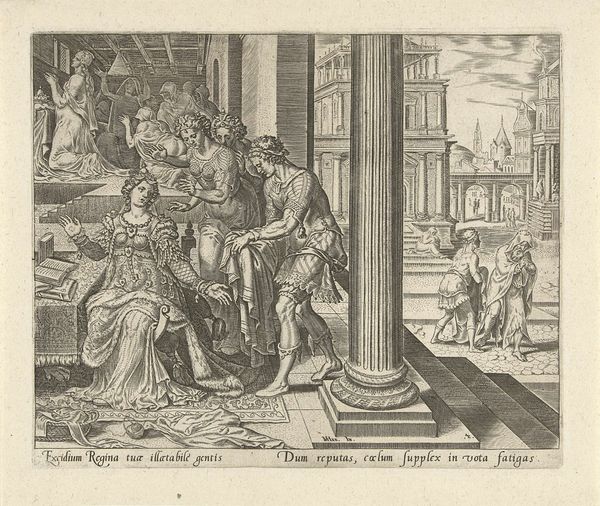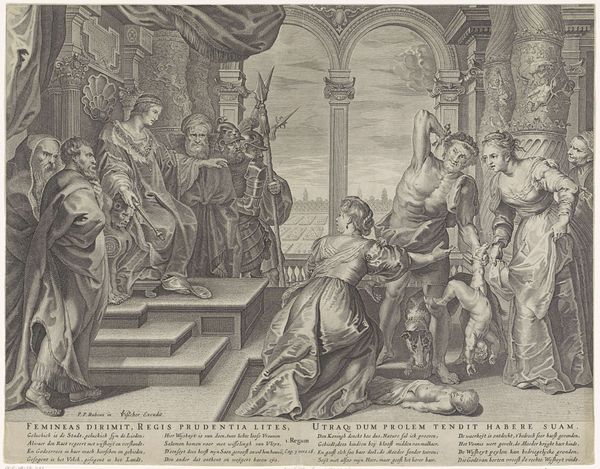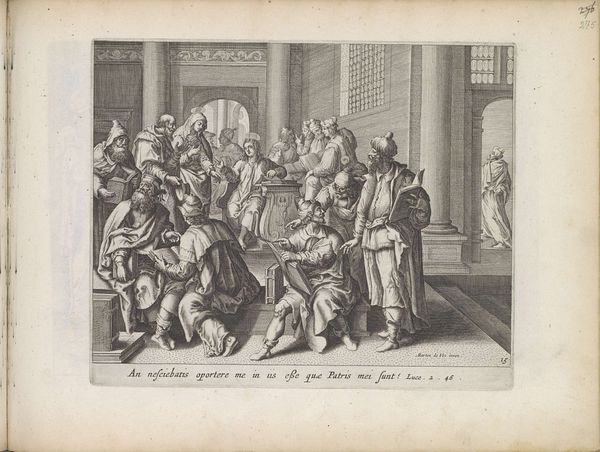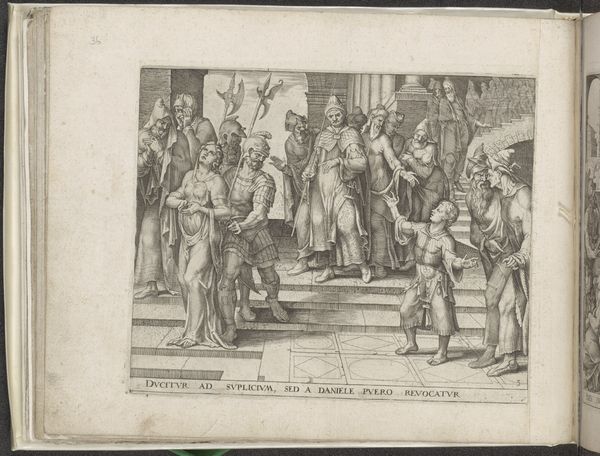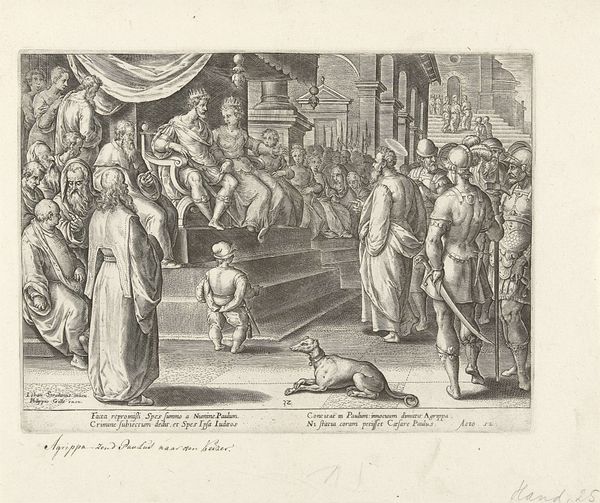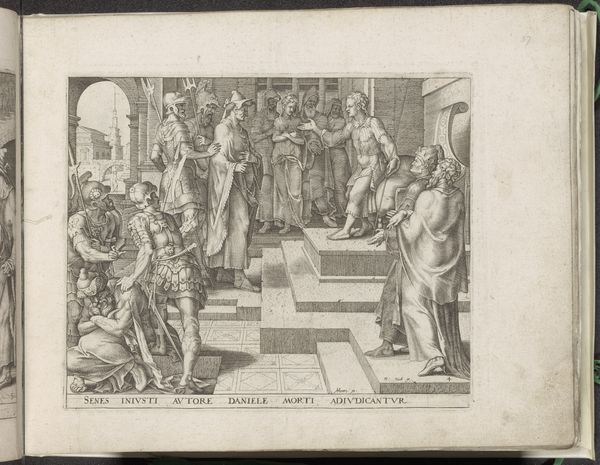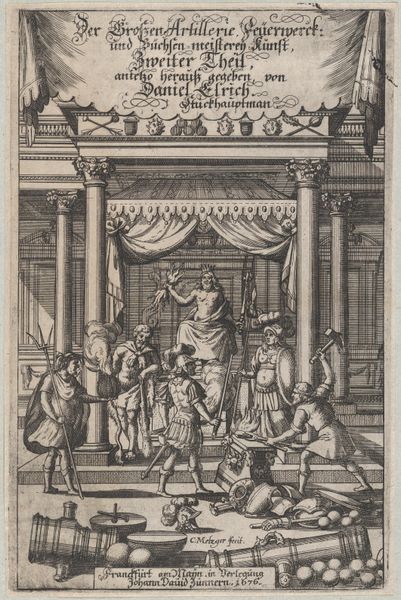
Judith Preparing Herself to Leave for the Enemies' Camp, plate four from The Story of Judith and Holofernes 1564
0:00
0:00
drawing, print, paper, engraving
#
drawing
# print
#
mannerism
#
figuration
#
paper
#
history-painting
#
northern-renaissance
#
engraving
Dimensions: 202 × 246 mm (image); 204 × 248 mm (plate); 228 × 274 mm (sheet)
Copyright: Public Domain
Curator: This is Philip Galle’s engraving, "Judith Preparing Herself to Leave for the Enemies' Camp," plate four from The Story of Judith and Holofernes, dating back to 1564. Editor: It strikes me as remarkably detailed. The textures are quite pronounced, considering it's a print on paper. Almost feels like you could reach out and touch the fabrics. Curator: Galle's skill with the engraving tool certainly emphasizes materiality. The process allows him to create incredibly intricate patterns, especially when rendering the luxurious garments worn by Judith's handmaid. And note the weight implied in the jug Judith carries – likely indicating how well supplied she is to withstand days within the enemy camp. Editor: Speaking of supplies, what's striking is the performance of ritual. The composition directs the eye toward this central exchange, framed as it is by the looming architecture. This scene wasn’t simply about pragmatics of food and water but a culturally loaded moment before Judith takes on a monumental and rather political task. Curator: Absolutely. The mannerist style, evident in the elongated figures, adds to the drama and emphasizes the artificiality, perhaps highlighting the theatrical nature of power during that time and how carefully it must be cultivated to subvert enemy rule. The labor and artistry, in effect, point to something monumental. Editor: And there is indeed artistry within the social context. It makes you wonder about the role prints like these played in shaping public perception of the story. The narrative, reinterpreted through Galle's craft, surely reinforced cultural values. Curator: I agree, and examining the piece through the lens of artistic production and circulation brings new insights into Judith's tale. Consider the consumption of such prints by different audiences during the period – its reach across social strata. Editor: Precisely, looking at it from the public perspective allows us to investigate the layers through which people understood these iconic scenes from history and lore. Fascinating how the political and personal converge in such images. Curator: Indeed, thinking of the resources involved in producing and circulating these prints—the workshops, materials, the economic and cultural capital. It’s more than just a story, it’s a system of cultural reproduction. Editor: And that makes appreciating it here at the Art Institute so rewarding, isn't it? Thinking through its initial reception versus what we see and understand centuries later is an interesting dialogue between past and present. Curator: Couldn't agree more. It bridges historical craftsmanship with contemporary material consumption, enriching how we interpret narratives of courage and power.
Comments
No comments
Be the first to comment and join the conversation on the ultimate creative platform.
